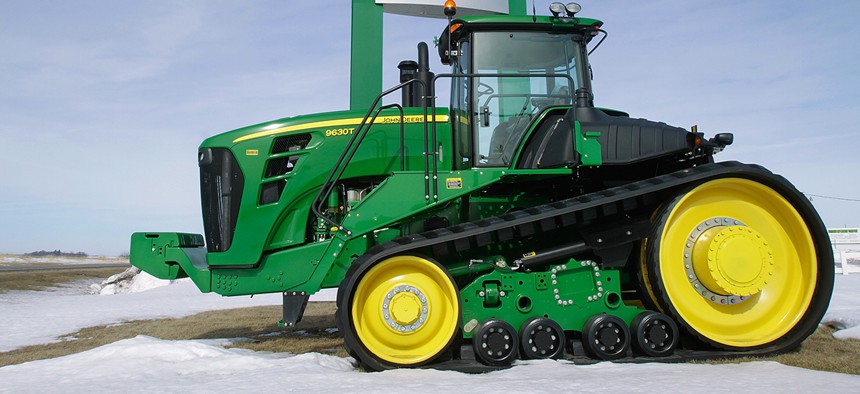After Trying to Build Self-Driving Tractors for More Than 20 Years, John Deere Has Learned a Hard Truth About Autonomy

Seth Perlman/AP File Photo
There’s a lot more to driving than just seeing the path before you.
When building its first autonomous navigation system in the 1990s, John Deere just wanted to build a tractor that could drive down a field and make a turn on its own. But after more than 20 years, the company has found that approach was entirely insufficient—in order to drive the tractor, you need to replicate the farmer.
“We have to have the ability to sense everything the human would inside of the system related to the quality of the job,” said Dan Leibfried, director of embedded solutions at John Deere’s Intelligent Solutions Group. “Whether it be preparing the soil, planting the seed, protecting the crop, or harvesting it.”
That’s to say, in order to build a fully autonomous tractor, there are no shortcuts. While a blend of GPS and other location tracking sensors, image sensors, and telematics assist John Deere vehicles to navigate fields today, the company still can’t truly replicate everything a human would see and feel sitting in the tractor cab. The company’s latest commercially-available machine with autonomous features, the S700 combine (a vehicle which harvests grain), can automatically adjust its harvesting equipment based on the condition of the crop it sees—but still gives the farmer sitting in the tractor a camera on the process to make sure it’s happening correctly. Right now all of John Deere’s tractors still require a human to sit inside—a sign that autonomy is a long road even in controlled environments.
Automakers and their partners in Silicon Valley chasing the dream of self-driving cars are similarly learning that there’s a lot more to driving than just seeing the road and minding the cars around you.
“As a human you have senses, you have your eyes, you have your ears, and sometimes you have the sense of touch. You are feeling the road,” Nvidia self-driving car head Danny Shapiro told Business Insider. “So those are your inputs and then those senses feed into your brain and your brain makes a decision on how to control your feet and your hands in terms of braking and pressing the gas and steering. So on an autonomous car you have to replace those senses.”
Both pursuits have their challenges. John Deere doesn’t need to contend with hundreds of other vehicles on its path, but a collision with other equipment or a misadjusted piece of equipment could mean disaster for an entire season. Cars and trucks carry precious cargo—humans—but benefit from signs, lines, and established infrastructure to help guide cars on the correct paths.
A vexing problem that inhibits John Deere and self-driving carmakers from an easy path to autonomy is dust and other weather conditions. Not only does weather change how the vehicle should act in its environment, but it also reduces the accuracy of the sensors, Leibfried said. He says the solution might come in redundancy—more sensors that could be used as backup, or to infer information not directly able to be seen.





